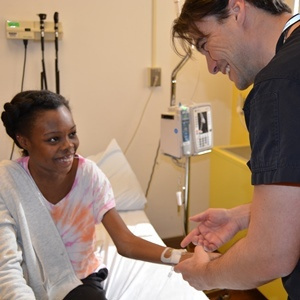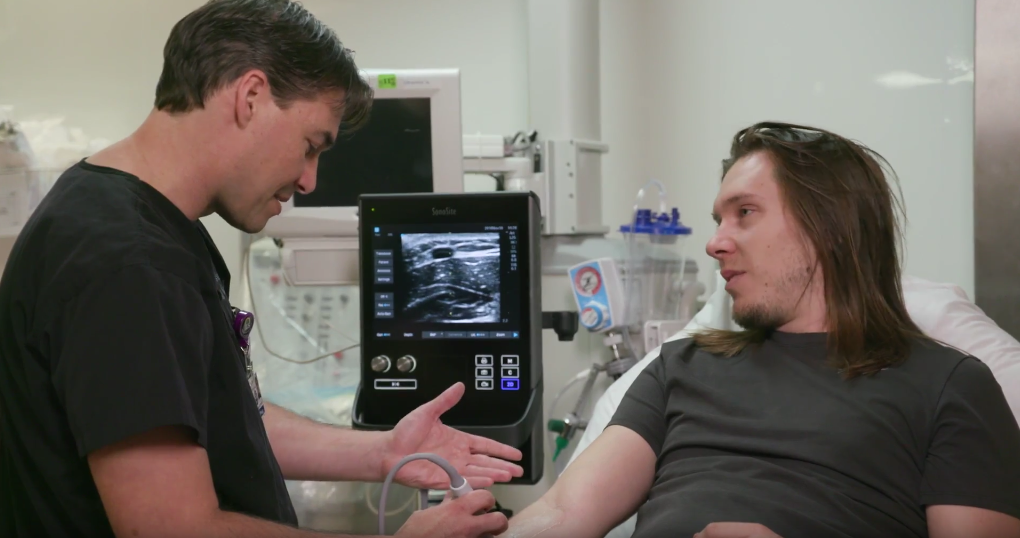
“Anyone who ever sat through nurses making multiple IV needle sticks understands the value of ultrasound-guided vascular access, but this goes much deeper than an annoying hour trying to draw a few vials of blood or an arm that is bruised for a day or two,” said Vascular Access Coordinator Matthew Ostroff. When St. Joseph’s Health Care System - one of the busiest hospitals in the country - first introduced their ultrasound-guided vascular access program they didn’t realize what a huge difference the technology would make. “Before we had the Sonosite ultrasound technology, we had a lot of patients with multiple sticks, bruises…” says Judy Padula, Vice President of Patient Care Services and Chief Nursing Officer at St. Joseph’s Healthcare System. “As minor as that may sound to some people, getting the IV in can be the make or break to their treatment.”
“In fact, we recently helped a 2-year-old pediatric oncology patient who was transferred to us from another local hospital because they were unable to successfully grant IV access after 8 attempts. It was after 10 p.m. when I got the call and we were able to place a line in just one stick.”
Some of the highlights:
- 98% success rate
- 3-5 minutes vs. 30-60 minutes leading to improved efficiency and patient satisfaction
- Elimination of costly and invasive PICC lines ($260 vs $16 in supply cost alone) plus reduced procedure risk
- 500K savings in supplies annually plus millions more when considering early initiation of treatment, decreased length of stay including same day discharges
Read more about St. Joseph's Vascular Access Program
St. Joseph’s ultrasound-guided vascular access program trains nurses in using ultrasound visualization to locate and access hard-to-see vasculature. Read the fill story of how St. Joseph's integrated ultrasound-guided vascualr access into their medical system and what the impact has been.


